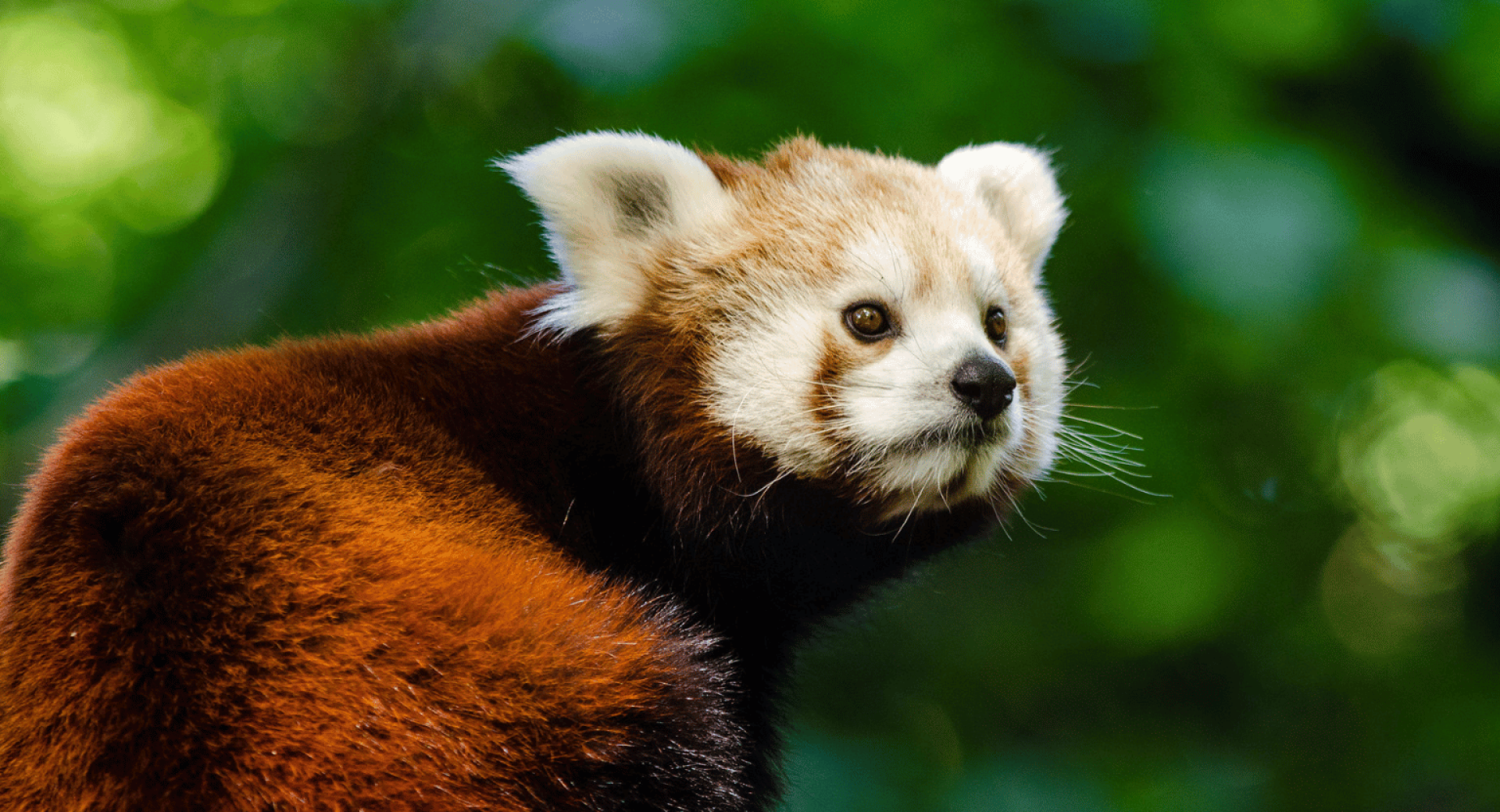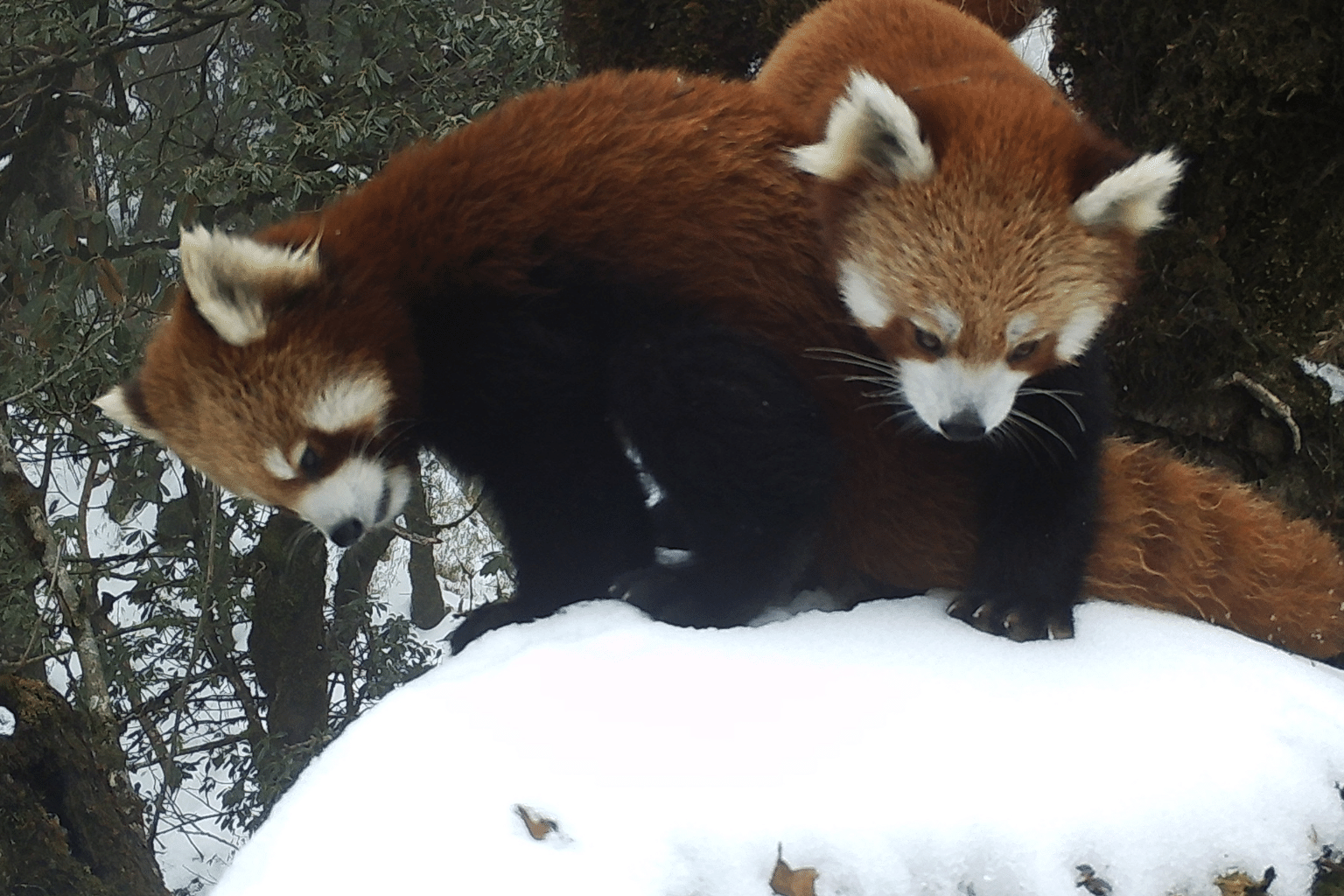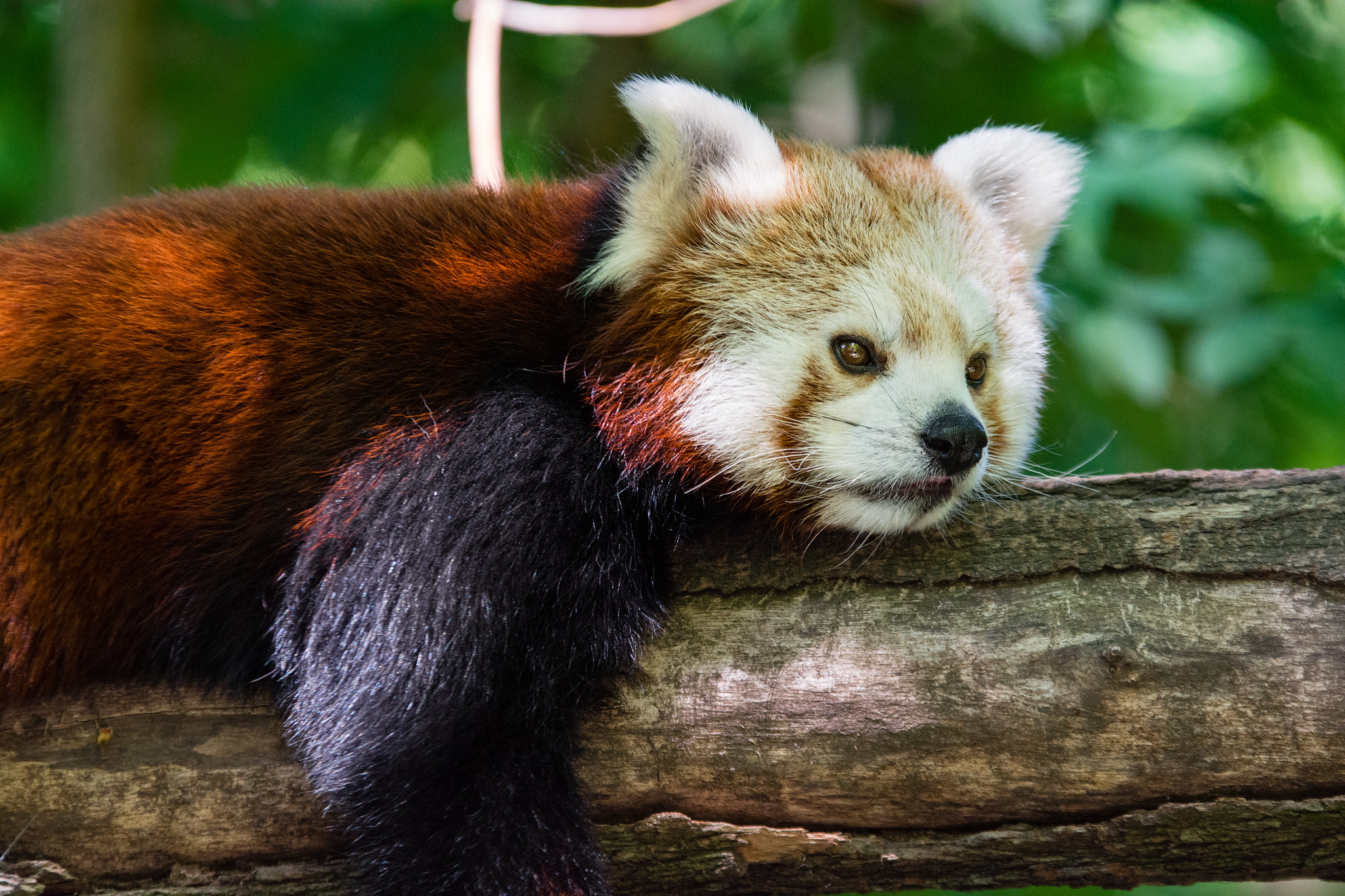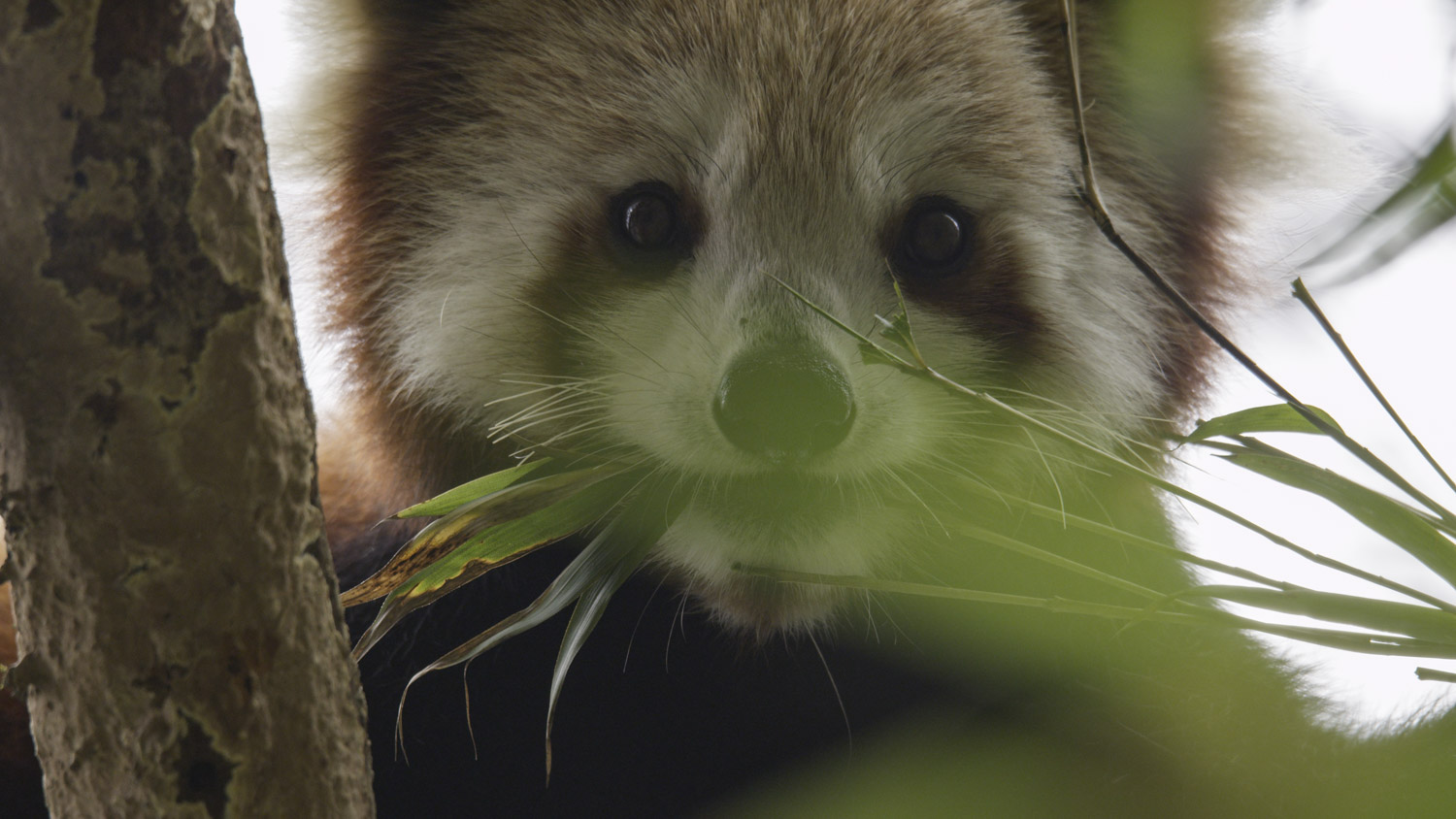The Heat Is On: How Red Pandas Survive the Summer

From panting to vertical migration, red pandas have amazing adaptations that help them beat the heat!
Just by taking a quick glance at a red panda, it’s very apparent that these adorable animals are equipped for some cold weather. From their long tails, to their fur-lined paws, red pandas are covered in a dense, double-layer fur that protects them from the harsh winters of the Himalayas. However, what do red pandas do when the weather becomes warmer? What adaptations do red pandas have to not only face the extreme cold of winter, but also the heat of summer?
 Red pandas photographed during our collar study. You can learn more in Red Pandas Love the Snow and Are Well Adapted To It.
Red pandas photographed during our collar study. You can learn more in Red Pandas Love the Snow and Are Well Adapted To It.
Red pandas have an optimal temperature range of 63-77℉ (17-25℃). Once the temperature exceeds that threshold, it can affect red pandas. The typical habitat of red pandas tends to be cooler overall, but during summer months, their temperature limits are tested. Red pandas risk severe health issues if exposed to high heat for too long. Because of this, red pandas have adapted behaviors to help eliminate these potential issues.
There are many pictures of red pandas curled up in tight balls. In these pictures, they likely have their tail wrapped closely to their face in an attempt to conserve their body heat during cold weather. Conversely, when a red panda becomes too warm, they will do the opposite of this behavior. They can be seen sprawled out on a tree branch in an attempt to cool themselves off. Another behavior of red pandas as a way to lower their body temperature is panting. Just like your dog, this behavior is a way of “sweating” to control the body temperature when their environment becomes too warm.
Red pandas benefit from many of their behaviors, including eating and foraging. Red pandas are considered to be crepuscular, which means that they do most of their activity at dusk and dawn. While this behavior has its perks in the winter months, it helps in the warmer months of summer as a way to limit most of their food foraging activity to the cooler parts of the day. Then, when they have had enough food for the day and the heat begins to climb, they can stretch themselves out on a tree branch to get some sleep.

Credit: Mathias Appel
Even with these behaviors, the climate during summer months can still be too warm for them. When this is the case, red pandas have been known to do a vertical migration. This is a way for them to reach lower temperatures as they move higher up in elevation in their mountainous habitat. In certain areas of the Himalayas, a vertical increase of 10,000 feet (~ 3 km) can see an average minimum temperature drop of up to 35℉!
With all of these adapted behaviors, red pandas can still be adversely impacted by the heat. Although red pandas and the giant panda are not closely related, they do share the same primary food source: bamboo. With global warming increasing average temperatures, pandas are beginning to have a greater need to migrate to higher elevations. However, the bamboo forests that pandas rely on for their diets may be unable to survive in these higher elevations which can cause food scarcity for the pandas. While this has mainly been researched for giant pandas, it can be an issue for red pandas as well.

Wild red panda in RPN's project area in eastern Nepal. Credit: Axel Gebauer
The Red Panda Network (RPN) works to conserve red pandas and their habitat. While red pandas have been able to adapt to the warm summer months on their own, our goal is to ensure they have protected forests to live in through community-based conservation programs like Plant A Red Panda Home: our campaign to restore and reconnect forests in Nepal.
You can help us reach our goal of raising $100,000 to plant 100,000 trees in Nepal! For every dollar you donate a tree will be planted in Nepal's red panda habitat!
Learn more red panda facts here.
Christina Barba
Writing and Communications Volunteer
Red Panda Network
